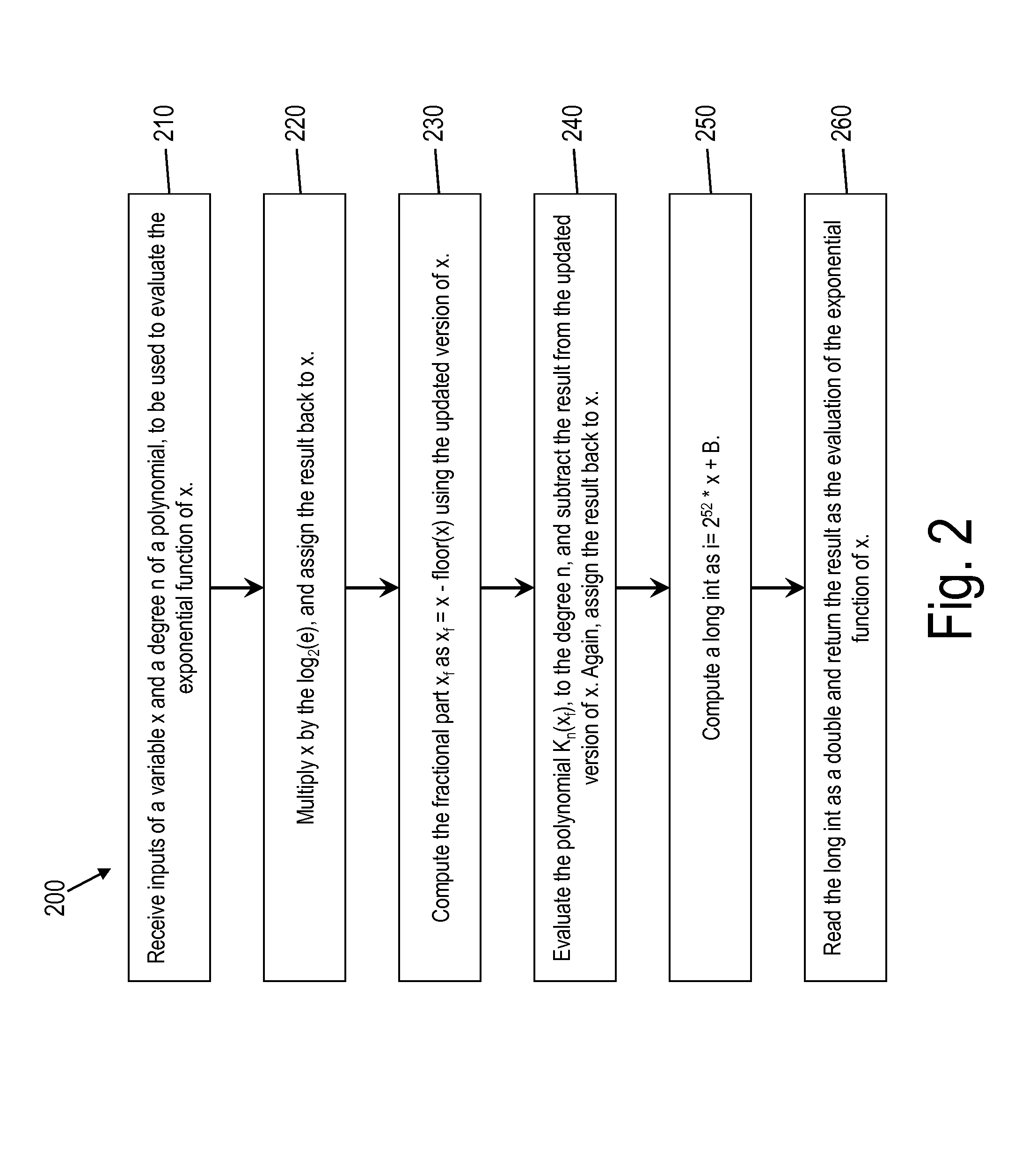Fast, energy-efficient exponential computations in simd architectures
- Summary
- Abstract
- Description
- Claims
- Application Information
AI Technical Summary
Benefits of technology
Problems solved by technology
Method used
Image
Examples
Embodiment Construction
[0018]Various embodiments of this disclosure are computation systems for computing the exponential function in a time and energy efficient manner. Some computation systems according to this disclosure may use double-precision architectures, i.e., a variable x is defined in the approximate interval [−746, 710] to respect the IEEE limits. However, some alternative embodiments are adaptable without major modifications to arbitrary and variable precision arithmetic architectures, e.g., single-precision, quadruple-precision, graphics processing units (GPUs), field-programmable gate arrays (FPGAs), etc. In some embodiments, in the case of streams of exponentials, the computation system may enable the use of only SIMD instructions, while conventional mechanisms for computing the exponential require various non-vectorizable operations. As a result, the present computation system may improve performance as compared to conventional systems and, at the same time, reduce energy consumption.
[001...
PUM
 Login to View More
Login to View More Abstract
Description
Claims
Application Information
 Login to View More
Login to View More - R&D
- Intellectual Property
- Life Sciences
- Materials
- Tech Scout
- Unparalleled Data Quality
- Higher Quality Content
- 60% Fewer Hallucinations
Browse by: Latest US Patents, China's latest patents, Technical Efficacy Thesaurus, Application Domain, Technology Topic, Popular Technical Reports.
© 2025 PatSnap. All rights reserved.Legal|Privacy policy|Modern Slavery Act Transparency Statement|Sitemap|About US| Contact US: help@patsnap.com



